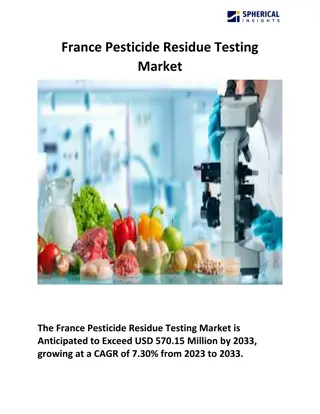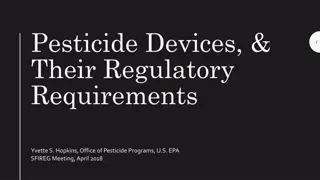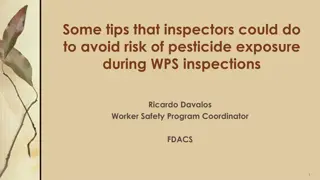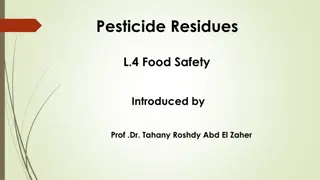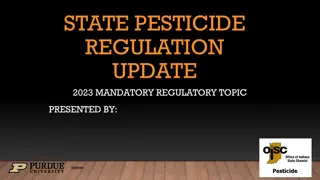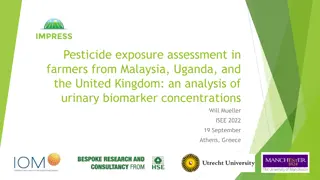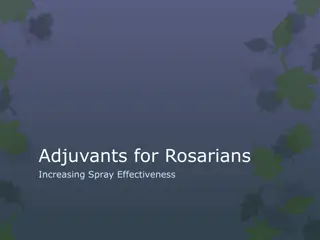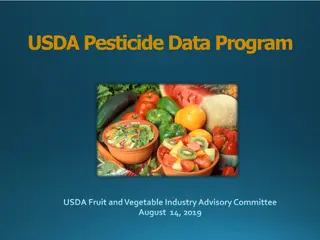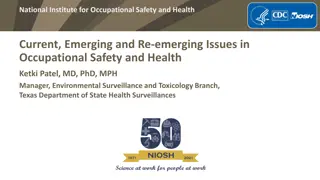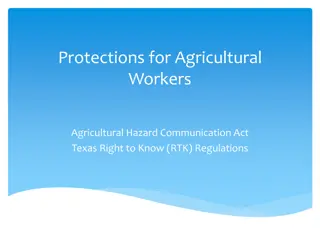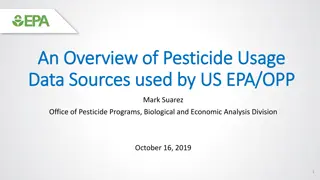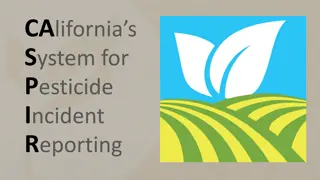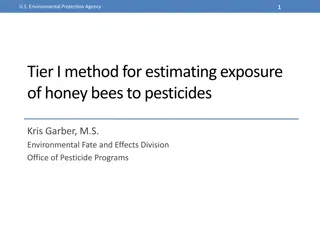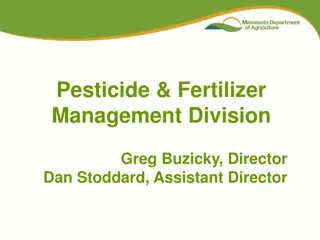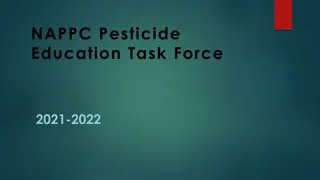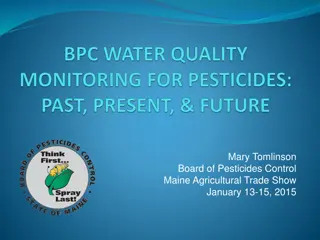Understanding Pesticide Chemistry and Their Importance in Agriculture
Pesticides are essential for controlling pests, diseases, and microbes that harm plants. They include insecticides, herbicides, rodenticides, bacteriocides, nematocides, molluscides, algicides, and fungicides. Integrated pest management is crucial for effective pest control in agriculture.
Download Presentation

Please find below an Image/Link to download the presentation.
The content on the website is provided AS IS for your information and personal use only. It may not be sold, licensed, or shared on other websites without obtaining consent from the author. Download presentation by click this link. If you encounter any issues during the download, it is possible that the publisher has removed the file from their server.
E N D
Presentation Transcript
CHM 320 PESTICIDE CHEMISTRY
control such pests. Pesticidal compounds are often used in the control of pests and diseases of plants and to control of micro-organisms and other microbes that disturbs the growth and productivity in plants. The are generally known to be toxic.
5. Nematocides used against nematodes
7. Nematocides used against nematodes
lot of damage. A complete elimination of the problem above was achieved through by integrated pests management which includes quarantine, agro technical, mechanical, biological and chemical methods. The chemical methods of protecting agricultural products as well as the animals was based on the use of various organic and inorganic compounds which are synthesised and are known to be toxic to pests invading
eradicate colorab that infects tomato while sulphur compounds are used as insect repellants. After this, then comes natural pesticides; some were obtained from plant extract e.g. nicotine obtained from tobacco leaves; pyrethroids obtained from pyrethrin flowers. Then come synthetic pesticide which includes:
Reasons for the obsolescence of pesticides
with them. Some of this issue has to do with the adaptability of some organisms to environment. The toxic nature of some chemicals to animate and inanimate substances led to their total ban and usage, especially those that have genetic effects such as genetic mutation.
applicant, consumer or even the environment. High specificity and selectivity of these chemicals to the environment is another factor in favour of new insecticides produced on regular basis.
Properties or characteristics of pesticides
1. They are toxic and therefore constitute pollutant materials into the atmosphere e.g. organochlorine pesticides;
2. Most pesticides have simpler structure, with simple biological activities.
4. Each pesticide has chemical intermediate, which often get obsolete after some time.
the operators and the public against dangerous effects of pesticides or effects of the residues of some pesticides. The law involves complete banning and shipping of certain pesticides to and fro Nigeria. It equally involves standardization of manufactured chemicals and protection of the consumers of finished products. The same regulation includes a provision that protects the supplier of toxic chemicals, application of toxic
Generally, pesticides are classified into natural and synthetic ones.
1. Natural Pesticides include Pyrethroids, Nicotine and Rotenones
2. Synthetic Pesticides include Organochlorines, Organophosphorous, Organocarbamates and Pyrethroids. Synthetic
Various methods have been used to classify pesticides, as shown below:
1. Classification based on intended use or the target organisms;
chemical nature of pesticide or simply on the chemical compositions. Chemical classification of pesticides is in three categories viz:
(a). Inorganic compounds such as sulphur and CuAs2O3, mercury and ;
(b). Natural pesticides or botanical pesticides-are those derived from vegetable plants, bacteria of from fungi preparation
such as Organochlorine, Organophosphorous, Organocarbamates and Synthetic Pyrethroids .
how the poison penetrates or permeates into the body of the pests and consequently knocking it down. Some sub- under this are enumerated below: classification
(a). Stomach poison pesticides: acts by poisoning insects when swallowed and digested with the food;
(b). Contact poison insecticides: acts by poisoning the insect when in contact with the skin;



